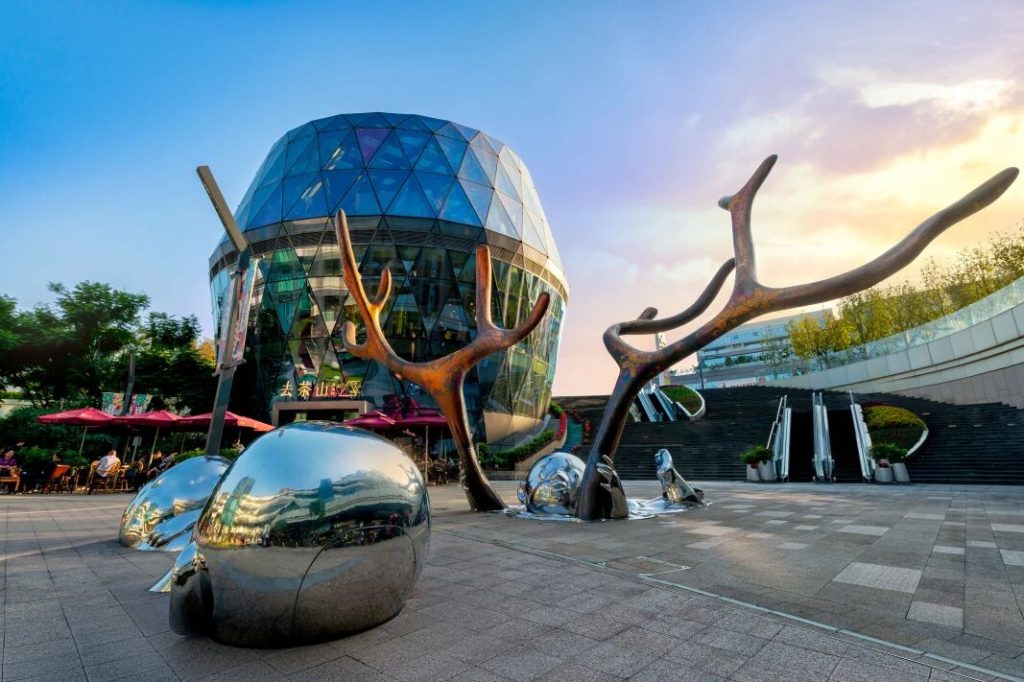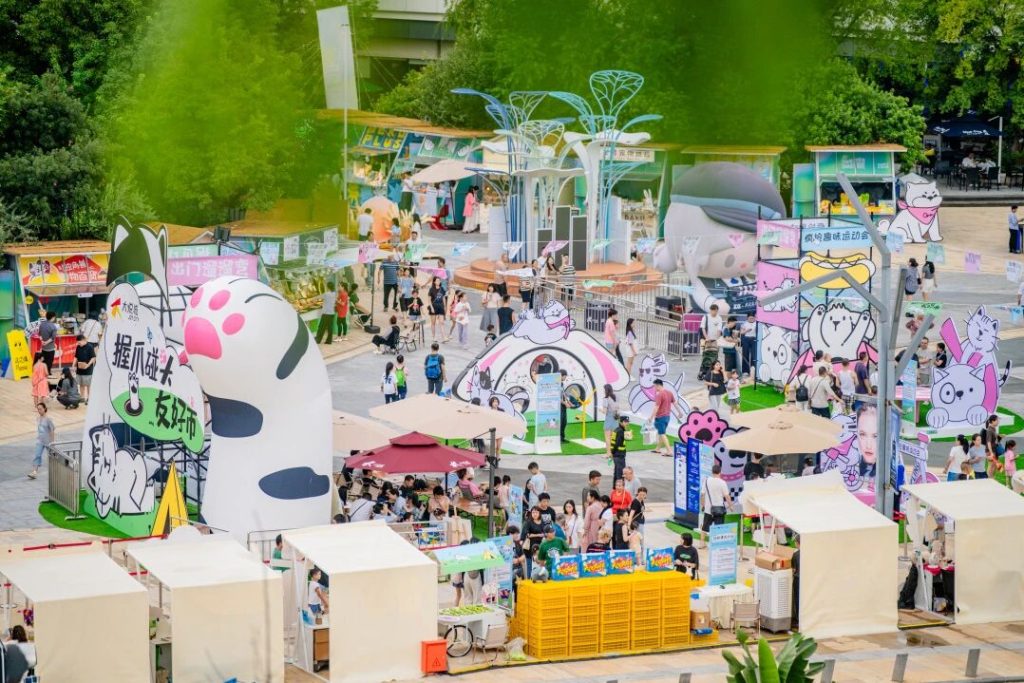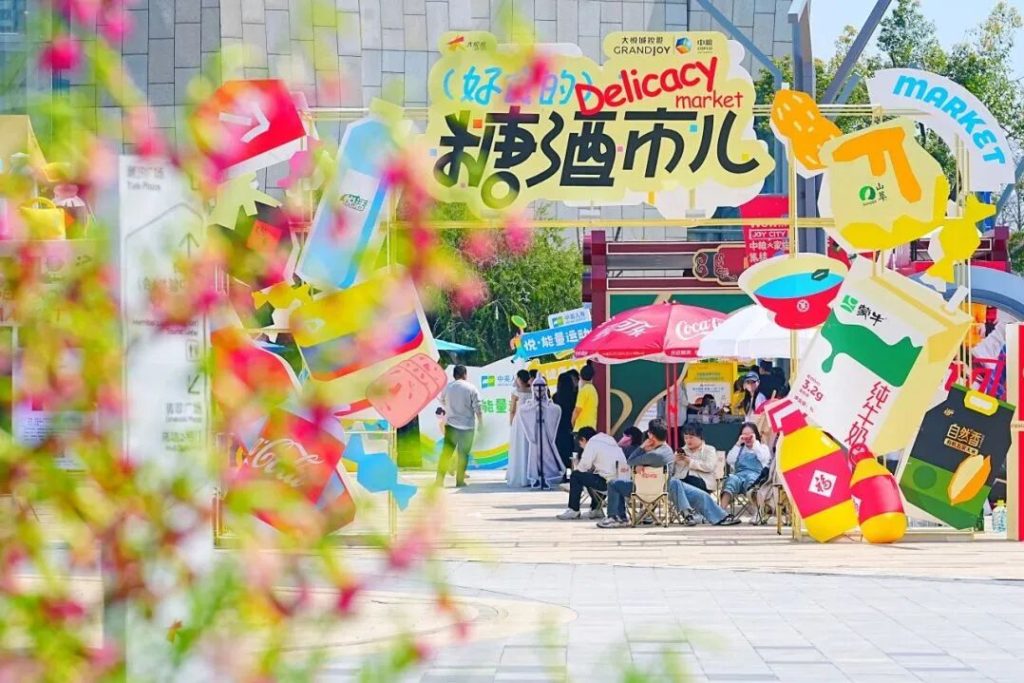The First Consumer REIT in the West: How Is It Leading the Market?
On April 29, the Huaxia Joy City Commercial REIT held its 2025 Investor Open Day event at the Chengdu Joy City, despite being on the second-to-last workday before the holiday. Yet, it attracted investors and industry professionals from across the country. Behind this enthusiasm lies curiosity about the first consumer infrastructure REIT in Western China. As of April 30, the Huaxia Joy City Commercial REIT had gained nearly 50%, topping the list of publicly listed shopping center REITs.Aside from the public Q&A session in the afternoon, the most frequently asked question offline was “Why?” This question is particularly intriguing when considering Mainland China’s commercial real estate sector, where asset management concepts have not fully taken hold. We will attempt to break down in this article how a commercial real estate project can achieve the “three steps” between leasing operations, asset valuation, and secondary market pricing, and how it connects the operational and investment value transmission chain.On the operational front: A 10-year transformation and the rise in popularity.Compared to more standardized investment products like hotels, apartments, and logistics warehouses, the evaluation system for shopping centers is much more complex. How can you quickly leave a lasting impression? “City positioning” is an excellent indicator—first look at the city, then assess its competitive rank within the local market.
The first step for a successful project is to become the best, or among the best, in terms of reputation and popularity within the local area. From this perspective, Chengdu Joy City, which has established itself as one of the top local attractions in Chengdu, a city that is currently a social media sensation, is undoubtedly impressive. But looking back 10 years ago, the Shuangnan-Zijing area, where Chengdu Joy City is located, was not even close to the fame of Tianfu Square, Chunxi Road, or Jiaozi Avenue. It wasn’t even a core commercial district.Over the past decade, Chengdu Joy City’s rise from being an unnoticed or even unrecognized project to becoming the city’s commercial leader can be attributed to three key factors:”Core Differentiation” in Space Planning:In 2015, when “relaxed living” was not yet synonymous with Chengdu’s lifestyle, the project incorporated green avenues, tiered landscaping, and rooftop parks, raising the green coverage to over 50%. This move created China’s first “recreational experience shopping park.” In 2017, it was officially awarded the National AAA-level Tourist Attraction title, marking a significant step in overcoming the development challenges of its surrounding area. The project’s distinctive spatial layout and vertical landscape system helped it break regional barriers, becoming a key city attraction.

As Chengdu’s “park city under snow-capped mountains” becomes the city’s new image, the combination of unique spatial structure, prime geographical positioning, and the surge in consumer interest in nature all contributed to Chengdu Joy City’s performance soaring.Continuous “Youth-Oriented” Targeting:Targeting young people in a developing district without major universities is bold, but from the outset, Chengdu Joy City focused its audience on the “18-35 year old emerging middle class and middle-class families.” This wasn’t just a slogan—it was reflected in their in-depth marketing strategies. For instance, as the first pet-friendly shopping center in Southwest China, Chengdu Joy City introduced indoor pet areas. Even with pet-friendly labels popping up everywhere today, few shopping centers can claim this distinction. In 2022 alone, the project hosted four global and Southwest debut exhibitions, including Pixar Sweet Dream Party and the IP-exclusive Gundam Exhibition, driving a considerable amount of traffic and engagement.Continuous “New and Upward” Brand Evolution:Since its opening, Chengdu Joy City has steadily upgraded its brand portfolio, from Decathlon, MUJI, and ZARA to luxury cosmetics brands like Dior, Chanel, and Lancôme. With the contraction of the beauty market in recent years, the project defied the trend by bringing in YSL, Kiehl’s, Shu Uemura, and more, creating a highly recognizable and competitive luxury beauty cluster.
Furthermore, with the outdoor sports trend booming, the project has successively introduced flagship stores of brands like Lululemon, DESCENTE, The North Face, and New Balance.Over nearly a decade, Chengdu Joy City, with its unwavering strategic direction, has transformed into the city’s commercial leader, winning the favor of the capital markets, marking its first major triumph.Asset Level: Breaking Conventional Profit Conversion.As the underlying asset of a consumer infrastructure REIT, the key to determining project valuation is its “operating profit” behind its reputation and popularity. Since its listing last September, the Huaxia Joy City Commercial REIT has exceeded its core performance expectations, achieving an annualized distribution rate of 5.41%, making it one of the primary reasons investors are keen to buy in.How can the advantages of space, customer profiles, and brand combinations be converted into impressive numbers on the financial statements? For this systematic project, I attempt to break it down into two crucial chains. One is the operational chain—how to maximize income within the existing lease structures?As mentioned earlier, the various city-level high-quality events played a leading role. Not only did these activities generate over 500 million exposures and attract more than 20 million visitors in 2024, giving the project a “quantitative advantage,” but more importantly, they brought about a “qualitative leap” in customer demographics—expanding beyond the local commercial area to attract younger consumers from surrounding cities like Deyang, Yibin, and even Yunnan, specifically for the purpose of visiting.

At the same time, aligning with trending categories and a precise mix of fashion brands gave Chengdu Joy City a strong edge in consumer conversion—its offerings are better than those in nearby malls, more approachable than the major brands on Chunxi Road, and its exclusive products are more unique than online options, making it irresistible for the new wave of young customers to make purchases.Additionally, over the past year, Chengdu Joy City has undertaken a series of deep collaborations focused on driving brand performance growth. These include partnerships with brands like JNBY for the 2025 Spring/Summer Fashion Show, exclusive member benefits with West Tower’s Old Lady brand and DJI, and other promotions, helping the 60 brands within the mall reach record-high revenue. Notable brands such as Lululemon, Nike, and Uniqlo have each achieved “million-level” sales figures, and brands like Zara, Sephora, Maimeng, and JNBY are ranked in the top three for sales in Chengdu.With more than 96% of the mall’s merchants using flexible rent structures, this growth in revenue naturally translated into increased income.The Asset Management Chain: Breaking Conventional Profit ConversionAs a consumer infrastructure REIT, the key to determining the project’s valuation lies in the “operating performance” behind its reputation and popularity. Since its listing in September of the previous year, Huaxia Joy City Commercial REIT has surpassed expectations, with its 2024 core indicators outperforming the forecast, achieving an annualized distribution rate of 5.41%, which is a major reason why investors are eager to buy.
How can the space advantages, customer profiles, and brand mix be transformed into impressive figures on the financial reports?For this complex undertaking, I attempt to break it down into two important chains. One is the operating chain—how to maximize income within the existing lease structure?Breaking Free from Traditional Rental Models.One of the key changes in Chengdu Joy City’s approach is the active monetization of high-traffic events and the younger consumer base through pop-up stores, space and advertising rental, transforming the promotion department from a traditionally “expense-driven” unit into a revenue-generating operational unit. This shift not only contributes to cost savings but also opens new revenue channels.Another significant change involved the asset transformation. After successfully reducing Decathlon’s flagship store from several thousand square meters to a 1,800-square-meter boutique, which led to a win-win situation in terms of store efficiency, rent, and brand diversity, the team repeated the strategy when replacing an old supermarket with Hema’s first garden store in Southwest China. This also led to the creation of a new food-themed area, “Yue Shi Hui,” featuring more than 10 popular food brands like Mr. Rice, greatly increasing the variety of quick-service dining options and overall rent in the area.After several rounds of space optimization, Chengdu Joy City’s B1 floor now boasts over 100 brands, representing nearly a third of the total brands in the mall.

This new trend of “B1 being the go-to floor for young people” has effectively been transformed into a “new traffic entry point” that drives performance growth. Compared to the traditional valuation model, where rental income is predicted to increase gradually per unit, this breakaway model of significant rent increases and added income has delivered a surprising boost in asset value and operating efficiency for Chengdu Joy City, laying a solid foundation for capital market trust.Value: Threefold Boost from Quality Additions.As a financial product that has been in development for just a year in China, consumer REITs are still in a value-recognition phase in the capital market. A typical question is whether investors buy into a REIT with shopping centers as underlying assets based on its original stakeholders, its assets, or its operations. In my view, the answer is undoubtedly its operational capabilities.Certainly, the same project will have different performance ceilings and capitalization rates depending on the city and location. However, when the same project is operated by different teams, the operational outcomes can differ dramatically. Fortunately, Chengdu Joy City checks all the boxes for what different groups care about: the city’s growing influence, the project’s operational performance, and the brand mix.Key Factors for Success:Chengdu’s Growing Influence:Chengdu, as a new first-tier city, has steadily increased its urban influence over the past few years.
Its population grew by 5.82 million over the past decade, ranking third in the country, attracting a massive consumer base. The government’s pro-consumption initiatives and the emergence of high-quality consumption spaces and new commercial carriers helped Chengdu enter the “Trillion Consumption City” club in 2023. International brands, such as Lemaire, have chosen Chengdu for their flagship stores, exemplifying the city’s rising commercial importance. During the Investor Open Day, many investors mentioned Chengdu’s charm as a “foodie and leisure city” as an added bonus to their investment decision-making.Operational Excellence:The project team at Chengdu Joy City shared its plans for this year, which includes clearer positioning for the three sections of the mall: A-building focusing on fashion and women, B-building emphasizing sports and youth trends, and C-building providing a relaxed, social atmosphere. This positioning strategy, coupled with an expansion of flagship brand introductions, aims to inject continued vitality into the mall.Member Value Enhancement:With a current base of over a million members, the project plans to activate membership value through core brand collaborations, community-building, and high-quality interactions. Upgrades to membership rights and new “Member Days” initiatives are designed to improve member engagement and encourage traffic growth.